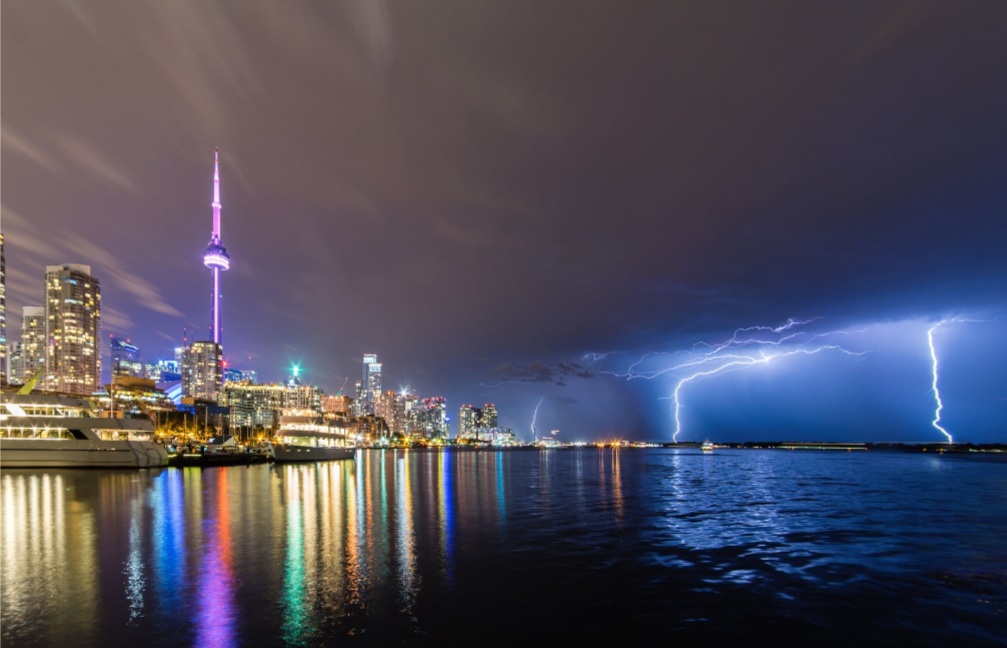**** Info via Environment Canada
The colours of lightning

Have you ever noticed that a lightning’s flash isn’t always a bright white colour? That’s because there are invariably different particles in the air between you and the flash.
All lightning starts out as white lightning as it contains the entire spectrum of colour. Haze, dust, moisture, raindrops and any other particles in the atmosphere affect the color by absorbing or diffracting a portion of the original white light of lightning. Similar to the different colours seen at a sunset, the more dust and water particles between the observer and the flash will affect the colour of lightning. Lightning therefore, can be seen to occur in a variety of colours: white, purple, blue, yellow, red, green and more.
White lightning – the most common colour – is seen when the atmosphere is dry, has few pollutants and the flash is close.

Yellow and red lightning can be seen when there is moisture and/or common dust particles in the air. The shorter wavelengths like blue and purple scatter out first, leaving the longer wavelengths like red, orange and yellow.

Pink and Green lightning, which is rare, can be seen in snowstorms. The snowflakes refract the white lighting into the different colours.
No matter what colour lightning you happen to see, it is deadly. Remember to take safe shelter immediately upon hearing thunder and remain there for 30 minutes after the last rumble.

.



